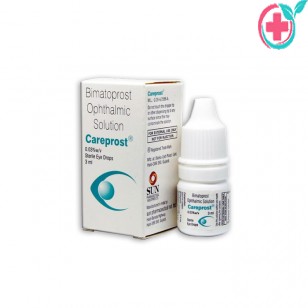Are Bimatoprost and Careprost The Same?
Glaucoma is a group of eye diseases that can cause vision loss and blindness by
damaging the nerve in the back of your eye called the optic nerve.
The most common treatment for glaucoma is prescription eye drops. They work by
lowering the pressure in your eye and preventing damage to your optic nerve. These eye
drops won’t cure glaucoma or reverse vision loss, but they can keep glaucoma from
getting worse.
Eye drops for glaucoma may affect how those other medicines work.
Some types of eye drops work by helping fluid drain from your eye, which lowers eye
pressure. Examples include:
Prostaglandins,
Rho kinase inhibitor,
Nitric oxides,
Mitotic or cholinergic agents,
Other types of eye drops work by lowering the amount of fluid your eye makes.
Examples include:
Alpha-adrenergic agonists,
Beta blockers,
Carbonic anhydrase inhibitors,
Eye drops are recommended for the treatment of dry eye symptoms, sensitization
reactions, and eye redness. But most eye drops contain a preservative called
benzalkonium chloride (BAK).
Careprost Eye Drops are a medicine used to treat eye conditions such as ocular
glaucoma and open-angle glaucoma that cause increased pressure inside the eye. This
medication works by reducing the pressure of the fluid inside the eye. Careprost eye
drops have side effects such as eye irritation, itching, discomfort, or redness. It can also
cause blurred vision right after the drops are put into your eyes. Avoid driving or using
machinery until your vision is clear. Careprost Eye Drops should be used regularly as
directed by your doctor to get the most benefit from them. Avoid stopping these
medicines without consulting your doctor. However, be sure to take them out before
putting the drops in your eyes and wait at least 15 minutes before putting them back on
if you wear contact lenses. Careprost eye drops should be avoided if you don't like them.
Tell your doctor if you are using any other medicines for your eyes or if you have any
other eye problems. Consult your doctor if you are pregnant or breastfeeding.
Pharmacokinetics
Absorption
Following the installation of one drop of 0.03 biological eye drop solution once daily to
both eyes of 15 healthy subjects for two weeks, blood concentrations peaked within 10
minutes of administration and were lower in the male and female. The detection limit
was lower (0.025 ng/mL) in most subjects within 1.5 hours of administration.
Distribution
Bimatoprost is moderately distributed into body tissues with a steady-state volume of
distribution of 0.67 L/kg. In lethal blood, the contrast is mainly in the plasma. About
12% of bioplastics remain unbound in human plasma.
Metabolism
Bimatoprost is the major circulating species in the blood when it reaches the circulatory
system.
Eliminate
The total blood clearance of bimatoprost is 1.5 L/h/kg. Up to 67% of the dose is excreted
in the urine while 25% of the dose is excreted in the faeces. Keep it clean!
Buy Careprost online on: Online Generic Medicine
Wash your hands before putting the drops in your eyes and do not let the tip of the
droppers touch your eyes, eyelids, eyelashes, or fingers. Close and press
- Patients often worry about not getting enough eye drops in their eyes because they feel
some of the eyes drops running down their faces. The simplest thing to do is to close
your eyes for 2 minutes after instilling the drops because blinking activates the "pump".
“To suck your tears from your eyeballs. This is a good time to relax and take some time
to refresh you during the day. Stop on time
- The second way to make sure the eye drops get into the eye is to perform the “on-time
occlusion”. "This involves pressing your finger (recommended index finger) near the
inner corner of the eye for 2 minutes after instilling the eye drops. Time is (sort of)
Everything
- As for timing, for a single drop taken once a day, there are medications that are best
taken in the morning and others that are best taken in the evening. Cold and wet
- Patients often say they don't know if enough eye drops have been put in their eyes
because they mostly feel the drops on their cheeks.
- While each eye drop is exactly the same size, all bottles are designed in such a way that
The eye drops hold more medicine than your eyeball. Talk to your pharmacist
- However, if you notice that you run out of medicine too quickly even though you are
only using one drop at a time, talk to your pharmacist if you find that you are having
trouble squeezing the bottle.

